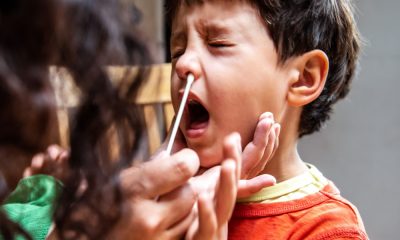Depression, anxiety, and other mental health issues could be the most intriguing long-term effects of severe COVID-19. A new study found that bedridden patients were at high risk for these conditions that could linger for years after their bout with SARS-CoV-2.
COVID-19 And Mental Health
In a study published in The Lancet Public Health journal Tuesday, researchers studied acute COVID-19 severity and mental health morbidity in patient populations across six countries: Denmark, Estonia, Iceland, Norway, Sweden, and the United Kingdom. They only looked at data collected from the participants from March 27, 2020, to Aug. 13, 2021.
A total of 247,249 people participated in the observational study, and only people aged 18 years and above were allowed to join. About 4% or 9,979 tested positive for the novel coronavirus during the study period. Upon examination, the researchers found that those who tested positive were more likely to suffer depression and have trouble sleeping than those who didn’t. Fortunately, the issues waned and only lasted for two months.
Meanwhile, things looked a bit gloomy for those who contracted the virus and spent seven days or longer bedridden while battling the disease. The mental health issues they experienced lasted way longer, with the researchers noting that they suffered such effects for about 1.5 years. They were also 50-60% more likely to suffer persistent depression and anxiety symptoms throughout the observation period.
Implications Of The Study
According to the researchers, the long-term mental issues among survivors of severe COVID-19 should be given attention by the medical community when treating patients battling the same form of coronavirus disease. They wrote that their findings call for “increased vigilance of adverse mental health development” among severe COVID-19 patients.
For University of Iceland researcher Ingibjörg Magnúsdóttir, the symptoms might have persisted in bedridden patients because they were also worried about the long-term health effects of COVID-19. Moreover, their social contact with other people was limited due to their long COVID symptoms, resulting in a feeling of helplessness.
“The higher occurrence of depression and anxiety among patients with COVID-19 who spent seven days or longer bedridden could be due to a combination of worrying about long-term health effects as well as the persistence of physical long COVID symptoms well beyond the illness that limit social contact and may result in a sense of helplessness.” Magnúsdóttir, who co-authored the study, was quoted as saying by Euractiv.
The upside was the patients who battled the mild form of COVID-19 were at a lower risk for the mental health issues observed in bedridden patients. University of Iceland’s psychiatric epidemiologist Unnur Anna Valdimarsdóttir, who led the research, told USA Today, “The good news is that the patient group as a whole is not at higher risk of developing long-term (mental health) symptoms.”
















